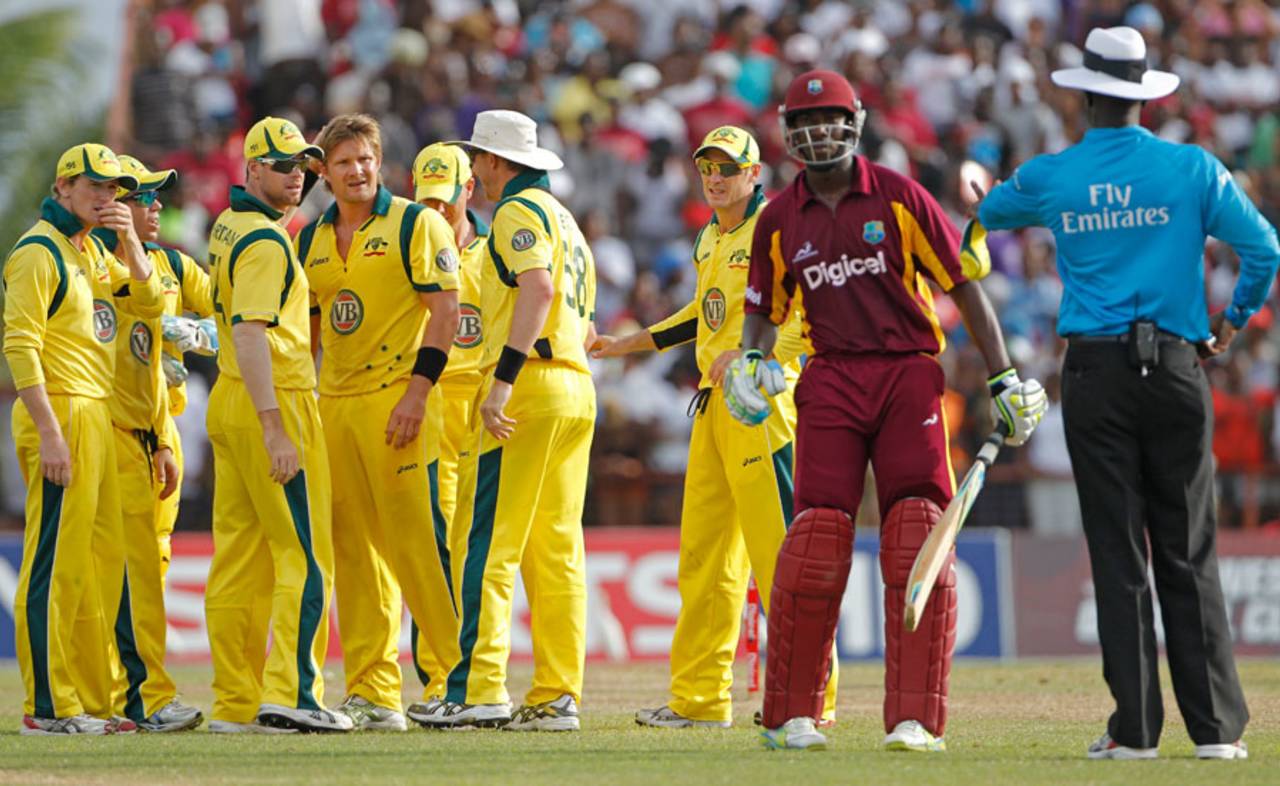No team will want to intentionally play poor cricket, but there's something to be said for peaking at the right time. Australia and New Zealand are in irresistible form at the worst possible time - unless, of course, they can sustain their purple patches for six weeks. It's almost inevitable that you'll have a poor game sometime. England and Pakistan must be hoping for the mirror opposite; their hopes hinge on Lady Luck smiling on them when it matters most - in a crucial cutthroat match, when perhaps an in-form team picks a bad moment to slip on a banana skin. West Indies seem to have found a bunch of bananas already - to borrow from the Harry Belafonte classic: daylight come and they wanna go home!
Pakistan loom as a danger to any team, regardless of winning streaks. They proved that when they won the 1992 World Cup, when it was last hosted in the Antipodes. This time around, though, I can't see any of those outsiders (and I rank England, Pakistan, West Indies and Sri Lanka in that category) being able to win three knockout games in a row to take the Cup, but one of them will trip up a favourite. India's bowling almost qualifies them to be dismissed outright as genuine contenders, but their batting, with Virat Kohli, MS Dhoni, Suresh Raina and Rohit Sharma in it, will unnerve opponents. As pitches get fatigued, perhaps they'll get lucky on a dry deck. There's just too much batting pedigree to write India off too soon.
We've already seen a host of no-ball replays, each frame scrutinised to the millimetre to see if the bowler has a hint of rubber behind the line, while in the background the non-striker can be seen blatantly stealing a few feet. The video replays will agonise similarly over run-outs that are almost impossible to split, oblivious to the fact that the non-striker may have already stolen an unfair advantage. And the poor bowler, like Lasith Malinga against New Zealand, will be pinged for an infraction that is all but invisible outside of a freeze-frame shot. How can the ICC continue to allow this to keep happening?
It will also be interesting to see how many no-balls go undetected just because they don't result in a dismissal. Umpires only refer these calls when a wicket has been taken, but what about the times when they miss no-balls? Those could change the course of a game. The reluctance to use video technology to get every decision right is baffling. Surely the equivalent of a tennis line judge could be employed to watch the front-foot line on a TV monitor and alert the on-field umpire to an infraction? If the bowlers are flirting with the line as often as they are, why is it only scrutinised when a wicket falls?
Mind you, this is the same ICC
that couldn't react in time to alert the umpires to avert the farcical end to England's innings on Saturday, so what chance of a line adjudicator being able to react in time to inform the umpire? The match referee had a few minutes to see what was looming, the commentators previewed it, and yet no message was relayed to the umpires.
Here's another modern cricket habit that will cost some team dearly this World Cup: the practice of fielders pinging the ball at the stumps when there is absolutely no chance of effecting a run-out. For a game that is now micro-managed to the nth degree, where team analysts attempt to reduce every possible risk factor, this practice flies in the face of all logic. It will come back to haunt someone in the next few weeks. I've seen it this summer already in the Big Bash: Melbourne Renegades shot themselves in the foot
in a close game against Melbourne Stars, when Matthew Wade repeatedly gave runs away by hurling the ball at the stumps. Sixers likewise in the
final of the BBL. No one thinks it matters in the middle of the innings, but an overthrow is worth the same number of runs regardless of when it happens. I've asked professional cricketers why they do this and the answer I've got confuses me even more. They claim they are not aiming to hit the stumps at moments like this, which then leads to the question: what's the point of it then? Perhaps what they won't admit is that they've been instructed to do this to scuff the ball up.
A final observation. This will be remembered as the World Cup where death bowling died a dishonourable death. Never in the history of the game, albeit aided by field restrictions, short boundaries and heavy bats, has bowling at the death been so atrocious. Already Sri Lanka, England and Zimbabwe have plumbed new depths. India's practice match against Australia was embarrassing even by school cricket standards. The inability to land yorkers consistently is stunning. The full-tosses are so prolific that you sometimes think you're watching replays. Every team has a bowling coach, and yet the standard of bowling under pressure has never been lower. For all the talk of pitches favouring the hosts, it doesn't really matter if you can't land it on the cut surface.
